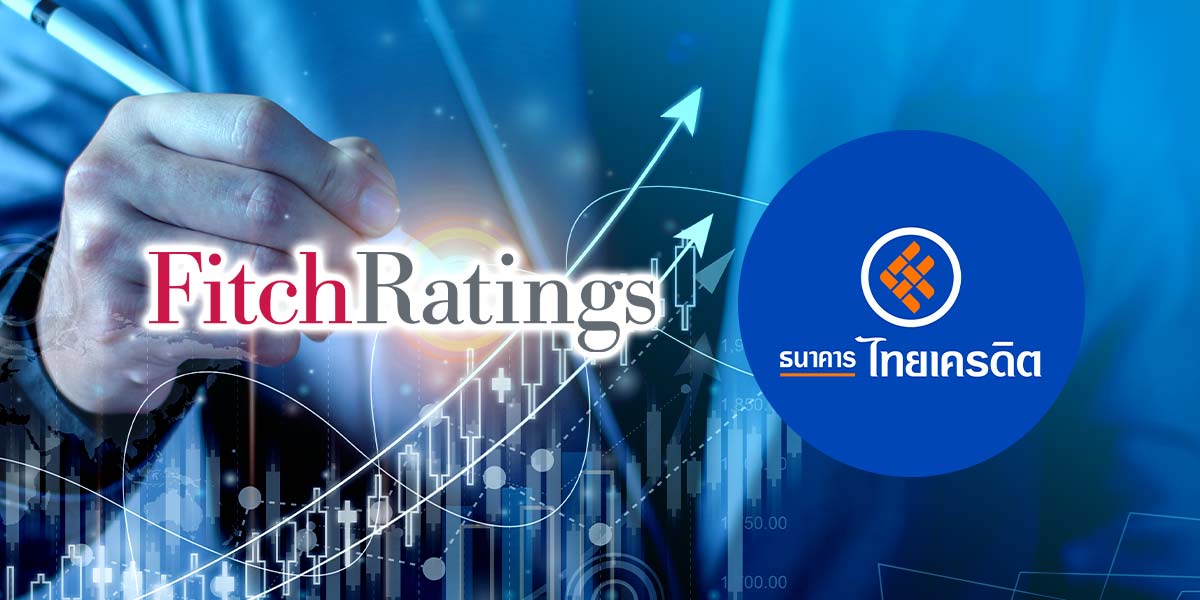Fitch Ratings (Thailand) has assigned Thai Credit Bank Public Company Limited (SET: CREDIT or TCB) a National Long-Term Rating of ‘A(tha)’ and National Short-Term Rating of ‘F1(tha)’ with a Stable Outlook. The rationale for this rating are as follows:
Key Rating Drivers
Standalone Profile Drives Rating: TCB’s National Ratings are driven by the bank’s standalone credit profile, and reflect its niche business model in the micro SME lending segment and record of high profitability and sound financial buffers. The assessment also incorporates the higher risks inherent to its core borrower segment, and the risks associated with its recent rapid loan growth.
Modest Presence; SME Emphasis: TCB’s business profile reflects its limited presence among commercial banks in Thailand, with a market share of 0.8% in both assets and deposits. The business profile also takes into account the narrower focus of its business model, mainly on small SME loans, which comprised 68% of total loans at end-1H25.
Rapid Growth in Vulnerable Segment: The risk profile reflects the bank’s significant exposure to smaller borrowers that tend to be more vulnerable during economic downturns, as well as loan growth above the industry average. TCB’s loan growth was 25.3% compared with 2.1% for the industry in 2021-2024 (June 2025: 5.2% vs. -0.4%, respectively). However, these risks are partially mitigated by the buffers its high interest rate charges provide and the credit insurance provided by Thai Credit Guarantee Corporation.
Asset Quality Challenges: TCB’s impaired loans ratio was higher than the industry average at 4.8% as of June 2025 and has been on an increasing trend over the past several years, commensurate with its business model. Its concentration in high-risk borrowers has resulted in credit costs that are significantly higher than those of its peers. The bank’s concentrated loan mix in riskier segments makes it susceptible to larger impairment losses if the economic environment deteriorates more than it expected.
Profitability Remains Acceptable: We forecast a moderation in TCB’s profitability due to the weak environment, particularly the lower policy rate. However, we believe the high-yield nature of its loans will continue to offset credit costs and lead to above-sector profitability. TCB’s operating profit/risk-weighted asset ratio was 3.1% in June 2025, compared with the sector average of 2.2%, highlighting its ability to maintain stronger profitability.
In addition, the bank benefits from a high net interest margin of 7.9% in June 2025, well above the sector average of 3.1%. We expect its earnings performance to remain above the sector average in the near term.
Building Up Capital Buffers: TCB’s common equity Tier 1 (CET1) ratio has shown sustained improvement over the past several years and was at 15% in June 2025 (2024: 14.8%, 2023: 13.1%). It has received capital boosts through profit accumulation and an equity injection from its IPO in February 2024. Nevertheless, the CET1 ratio remained lower than the industry level of 16%. We expect the bank to continue its robust internal capital accretion, which would compensate for the loan growth in our forecast.
Loan Growth Outpace Deposits: The loan-to-deposit ratio was around 127% in 1H25, compared with the sector average of 90%. The ratio has remained above 100% over the past few years due to high levels of loan growth and reflects the bank’s relatively weak deposit franchise relative to larger banks. We expect the ratio to remain broadly stable over the next several years, but to remain higher than the sector average.
Rating Sensitivities
Factors that Could, Individually or Collectively, Lead to Negative Rating Action/Downgrade
A downgrade of TCB’s National Long-Term Rating would arise from a weakening in its credit profile relative to other entities on the national rating scale in Thailand. This could result from a higher risk appetite, as may be indicated by loan growth consistently exceeding 20% without sufficient mitigating buffers.
Negative rating action could also stem from a material weakening in the bank’s asset quality or capitalisation. This may be reflected by an impaired loans ratio sustained above 6% combined with loan loss allowance coverage of below 100%, or expectations of lower capital buffers with the CET1 ratio maintained below 12% in the absence of a credible plan to restore it to around this level.
Factors that Could, Individually or Collectively, Lead to Positive Rating Action/Upgrade
We do not expect material positive changes in the bank’s business profile or its risk profile in the near to medium term. However, we may upgrade TCB’s National Long-Term Rating over the longer term if we see substantial improvements in the bank’s franchise, which includes greater business model diversification and competitiveness against higher-rated peers, combined with a moderate risk appetite.
Source: Fitch Ratings





